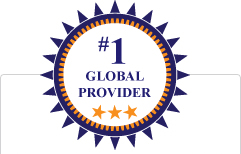...
How would you like to be a Guest Blogger for KMI? Email us at: info@kminstitute.org and let us know your topic(s)!
Workshop: Building a Business Taxonomy

Featured Guest Blog by Zach Wahl
In this third in the series of articles, guest
blogger Zach Wahl, President of Enterprise
Knowledge, LLC, describes the five-step
process entailed in his Business Taxonomy
Workshop:
...........................................................................
First, we ask participants to define the “what” and “why” of the business taxonomy. In short, this is the abbreviated business case for the effort. Though this may seem elementary, it is common to find participants and stakeholders who have highly varied opinions as to why they are there and what they’re being asked to accomplish.
Next, we have participants discuss the intended audience for the business taxonomy. This helps to define scope and highlights the challenge of a business taxonomy to serve multiple types of users with a single vocabulary. From this exercise we also derive personas, which we reference back to throughout the remaining effort.
For the third exercise, we ask participants to identify the verbs related to the system for which the taxonomy is being designed as well as the verbs associated with the activities of the organization itself. The interesting thing about this exercise is that it is largely industry and organization independent. Participants will offer verbs such as “research,” “search,” “browse,” and “learn” for the system verbs, and slightly more contextualized words for the organizational firms such as “manufacture,” “sell,” or “educate.” The point of this exercise, and the value it offers, is to serve as a guide for the workshop participants to get to what actually has the greatest value for business taxonomies, and that is the topics, or nouns, that contextualize the verbs.
Topics represent the core of a good business taxonomy design. They are the way we naturally relate and categorize most everything in our daily lives and therefore they are natural and intuitive to virtually all users. For the fourth exercise, we ask each of the participants to provide the core topics that comprise their business. One of the ways this is done is by asking for them to “fill in the blank” behind the verbs they already provided, again providing the context to what the organization does. More importantly, however, we’re seeking to derive the subjects of the organization and the systems for which the business taxonomy is being designed.
We collect each of these words from the users, including repeated words, and display them all together. What this yields, typically, is a clear view of the commonalities between the different workshop participants and the subject themes of the organization. Put simply, the product of the workshop provides a map of topics or subjects that people individually derived but naturally agree on. This is the start of the business taxonomy. From there, we can map the words that are most common and use the outliers to facilitate a discussion around what might be missing. This process is not supposed to be easy and has often proven to be a challenge, but after hundreds of successful outcomes, the results can’t be argued with.
The fifth exercise addresses the potential metadata fields and taxonomies beyond the core topics. As an outcome of the topic mapping, many participants will have suggested words that aren’t pure topics, but could more easily be characterized as a function, location, document type, or some other less contextualized type of word. As we did with the topical mapping, we identify these words, their potential value, and we use them to derive a list of additional metadata fields and values that could be of value as part of the overall taxonomy design. This is particularly important as it nods to more traditional taxonomies and eases the change management challenge with which the less flexible individuals might otherwise struggle.
Depending on the time allowed and progress made, the fourth and fifth exercises can be repeated at additional levels of detail, effectively creating a top-down business taxonomy design. In other cases, the initial products of the workshop can be leveraged by smaller groups, our own experts, or additional workshop participants to continue and refine the design efforts. In all cases, however, the workshop provides a direct and actionable starting point that reflects the needs of the users and the perspectives of the business. In a matter of hours or days, an organization can get their arms around what might otherwise have stymied them and risked or delayed an information management project.
Zach Wahl is the President and CEO of Enterprise Knowledge LLC, based in the Washington, DC area. Zach has more than 15 years of experience leading programs in the knowledge and information management space. He has worked with more than 200 public and private organizations to successfully design and implement information management systems, including content management, collaboration, social computing, search, taxonomy management, intranets and knowledge bases, and web.
RECENT POSTS
...









 ...
...
